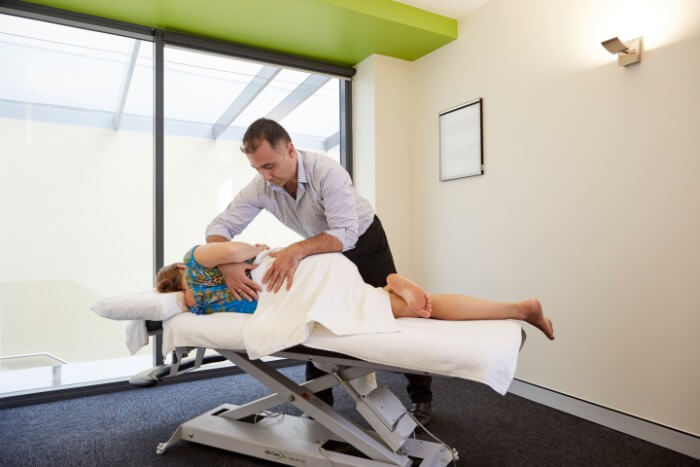Here are some tips on how to manage sports injuries and niggles without interrupting your fitness routine.
Many of us have had a niggle or injury brought about or aggravated by exercise. Correct management of these issues is important to prevent it from worsening, dropping out of your exercise routine or potentially causing other problems in the future.
A warm-up is essential to manage or prevent injuries
First and foremost, let’s talk about prevention. Without a doubt, prevention is the best way to combat these sports injuries. A proper warm up is essential and stretching after exercise can also make a big difference. Make sure you allow time to ease your body up to the level of intensity you are going to exercise at, especially if you are exercising early in the morning. Recent research has shown that up to 80% of back sprains occur within two hours of waking up. Planning to arrive 10 minutes before your class will do it. Speak to your trainer or Osteopath about how to warm up most effectively and which stretches will be of the most benefit to you afterwards.
Listen to your Body
During the workout, stay within your ability and listen to your body. This is especially the case if you are new to a fitness program and where you might still be learning the movements. For the first month of any program, class or new exercise you should be ready to take it slow and stay focused on learning technique.
Knowing the difference between muscle burn and pain is also really important in understanding your limitations. If something is truly painful stop doing it! Pain is the body’s way of protecting itself. Pushing the action further through pain can lead to injury. Instead, where possible modify the exercise to work the muscle without pain. If this is not possible this is where I would advise you to seek out a professional. We will properly assess what is going on in your body and devise a plan to manage the issue before returning to the exercise.
If you get injured, follow RICER
If you do happen to get injured during exercise, the best process to immediately follow is RICER. This is;
- Rest – rest the affected area
- Ice – apply cold pack covered in a towel for 20 minutes every two hours for the first 48 to 72 hours
- Compression – bandage injured site
- Elevation – elevate the injury above the level of the heart.
- Refer – See your GP or Osteopath for diagnosis and treatment
Alter Your Program
Injuries and niggles should be improved by resting the affected area for a period of time. But be careful not to interrupt your training schedule too much as once out of the habit of training it can be hard to get back into it! Instead alter your program, avoiding exercises that aggravate the injured site. For example, if you’re getting headaches or neck pain don’t do overhead lifting or sit-ups which involve lifting your head off the floor. Instead concentrate on exercises and stretches that open up your chest, or do leg work or low impact cardio. If in doubt speak with a trainer about the best exercises for you. Or book an appointment with an Osteopath to get your problem seen to and to help tailor a modified program.
Once an injury or niggle has resolved a careful return to the once aggravating exercise is recommended. Start slow, for example, do fewer repetitions and less weight than you were previously able to do. If you are still feeling good immediately and the next day, slowly return to pre-injury training levels.
Make an appointment today to see one of our Osteopaths and discuss how we can create an individualised plan to get you back to optimum health.

